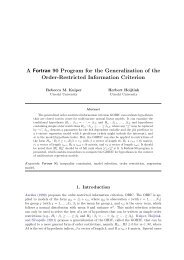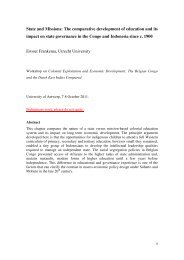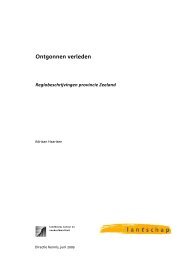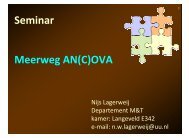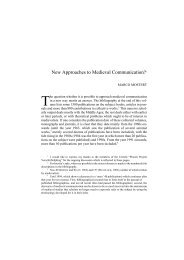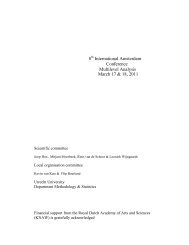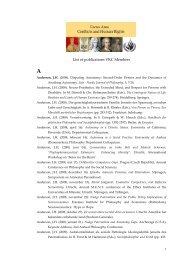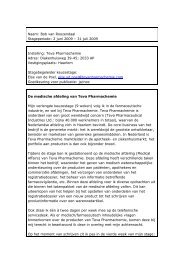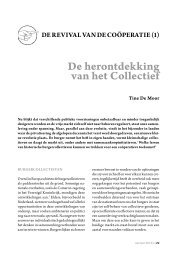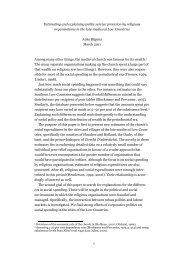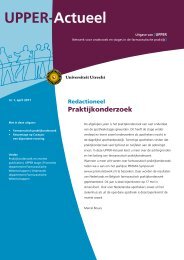Doing business in a wave of nationalizations: Philipp ... - Partner
Doing business in a wave of nationalizations: Philipp ... - Partner
Doing business in a wave of nationalizations: Philipp ... - Partner
You also want an ePaper? Increase the reach of your titles
YUMPU automatically turns print PDFs into web optimized ePapers that Google loves.
<strong>Do<strong>in</strong>g</strong> <strong>bus<strong>in</strong>ess</strong> <strong>in</strong> a <strong>wave</strong> <strong>of</strong> <strong>nationalizations</strong>: <strong>Philipp</strong> Brothers and the Bolivian t<strong>in</strong> experience Espen Storli, associate pr<strong>of</strong>essor, Department <strong>of</strong> history and classical studies, Norwegian University <strong>of</strong> Science and Technology (NTNU), Trondheim espen.storli@ntnu.no Draft version, please do not quote 1
<strong>in</strong>dustrial raw materials with representatives <strong>in</strong> virtually every country <strong>in</strong> the world possess<strong>in</strong>g metals or m<strong>in</strong>erals <strong>of</strong> commercial quality. 2 The lessons that the company learnt <strong>in</strong> Bolivia were central to this development. The story <strong>of</strong> <strong>Philipp</strong> Brothers <strong>in</strong> Bolivia is important <strong>in</strong> and <strong>of</strong> itself, but it is also l<strong>in</strong>ked to the larger question <strong>of</strong> the relationship between emerg<strong>in</strong>g market economies and mult<strong>in</strong>ational companies <strong>in</strong> the extractive <strong>in</strong>dustries <strong>in</strong> the post-‐war world. From the 1950s and onwards, resource rich nations became <strong>in</strong>creas<strong>in</strong>gly critical to the way foreign mult<strong>in</strong>ational countries dom<strong>in</strong>ated the extraction <strong>of</strong> their natural resources. Foreign ownership over m<strong>in</strong><strong>in</strong>g and petroleum was particularly regarded as <strong>in</strong>compatible with national control over such vital resources. 3 Gradually, host governments started to assert control over domestic m<strong>in</strong>es and oil wells, and especially from the late 1960s there was a <strong>wave</strong> <strong>of</strong> expropriations <strong>of</strong> foreign assets. By 1976, virtually all large-‐scale m<strong>in</strong><strong>in</strong>g and petroleum ventures <strong>in</strong> the non-‐Western world had been nationalized. 4 The nationalization drive <strong>in</strong> Bolivia was thus <strong>in</strong> some ways a harb<strong>in</strong>ger <strong>of</strong> what was to come. The basic chronology <strong>of</strong> the <strong>in</strong>ternational expropriation <strong>wave</strong> has been well documented, and we know how the acts <strong>of</strong> nationalization changed the power relations between the (predom<strong>in</strong>antly) Western m<strong>in</strong><strong>in</strong>g companies and the resource rich host countries. The exist<strong>in</strong>g literature has established the firm and <strong>in</strong>dustry factors that affected vulnerability to be expropriated, and the pattern <strong>of</strong> expropriation over time. 5 Yet, the focus <strong>of</strong> this paper is different. The aim is not to analyse the state takeovers as such, but to study what happened after the acts <strong>of</strong> expropriation. The host countries could, if they wanted to (and <strong>in</strong> the 1960s and 1970s they generally did want), take control over their natural resources, but the nationalization <strong>wave</strong> broke up established cha<strong>in</strong>s <strong>of</strong> vertical <strong>in</strong>tegration. The m<strong>in</strong><strong>in</strong>g mult<strong>in</strong>ationals had not only dug the m<strong>in</strong>erals and metals out <strong>of</strong> the ground, they had also processed and marketed them; after nationalization the host countries therefore had to figure out what to do with the output 2 ”Inside <strong>Philipp</strong> Bros., A $9 Billion Supertrader”, Bus<strong>in</strong>ess Week, September 3, 1979, p. 106. 3 Ge<strong>of</strong>frey Jones, Mult<strong>in</strong>ationals and Global Capitalism, p. 211. 4 Stephen. J. Kobr<strong>in</strong>, ”Expropriations as an attempt to control foreign firms <strong>in</strong> LDCs: Trends from 1960 to 1979”, International Studies Quarterly, vol. 28, no. 3 (Sep., 1984), p. 338. 5 Kobr<strong>in</strong>, ”Foreign Enterprise and Forced Divestments <strong>in</strong> the LDCs”, International Organization 34 (1): 65-‐88 and Kobr<strong>in</strong> (1984). 3
to buy ores, m<strong>in</strong>erals and other metallic raw materials and ship them to Europe or the US, depend<strong>in</strong>g on demand. Although the legend <strong>of</strong> Bolivian metal riches had been built on the silver that poured out <strong>of</strong> the region dur<strong>in</strong>g the Spanish reign, by the <strong>in</strong>terwar years the primary m<strong>in</strong><strong>in</strong>g product <strong>of</strong> the country had shifted to t<strong>in</strong>. T<strong>in</strong> had always been an important by-product <strong>of</strong> silver m<strong>in</strong><strong>in</strong>g, but the transportation costs from the highlands <strong>of</strong> Bolivia to the <strong>in</strong>dustrial centres <strong>of</strong> Europe and North America had been too high for the Bolivian output to compete with European t<strong>in</strong>. However, the <strong>in</strong>vention <strong>of</strong> t<strong>in</strong> cann<strong>in</strong>g and a long range <strong>of</strong> other <strong>in</strong>dustrial processes <strong>in</strong>volv<strong>in</strong>g t<strong>in</strong> led to a dramatic <strong>in</strong>crease <strong>in</strong> world demand for the metal. In addition, the traditional European m<strong>in</strong>es, primarily <strong>in</strong> Cornwall, were becom<strong>in</strong>g exhausted, and from the turn <strong>of</strong> the 20 th Century, Bolivia became the second largest t<strong>in</strong> producer <strong>in</strong> the world after Malaya. 8 Unlike what had been the case with the old silver m<strong>in</strong><strong>in</strong>g <strong>in</strong>dustry, local capitalists became the dom<strong>in</strong>ant group <strong>in</strong> control <strong>of</strong> the <strong>in</strong>dustry. This happened despite the fact that Bolivia at the time was open to foreign <strong>in</strong>vestments <strong>in</strong> m<strong>in</strong><strong>in</strong>g and although several powerful m<strong>in</strong><strong>in</strong>g groups from Europe, North America and Chile <strong>in</strong>vested <strong>in</strong> t<strong>in</strong> m<strong>in</strong>es <strong>in</strong> the country, local entrepreneurs emerged as the dom<strong>in</strong>ant m<strong>in</strong>e owners. Three major leaders controlled the domestic <strong>in</strong>dustry. The most powerful was Simon Patiño who had made his fortune when he struck one <strong>of</strong> the richest t<strong>in</strong> ve<strong>in</strong>s ever found <strong>in</strong> Bolivia <strong>in</strong> 1900, <strong>in</strong> turn mak<strong>in</strong>g Patiño enormously rich. Allegedly his personal <strong>in</strong>come <strong>in</strong> 1911 was already greater than that <strong>of</strong> Bolivia. 9 By 1929, he controlled almost 60 per cent <strong>of</strong> domestic production. Patiño also <strong>in</strong>tegrated downstream by acquir<strong>in</strong>g control <strong>of</strong> Europe’s largest t<strong>in</strong> smelter, Williams, Harvey <strong>in</strong> Liverpool. 10 Patiño’s ma<strong>in</strong> domestic competitors were the Aramayo-‐family and Mauricio Hochschild. The Aramayo’s began as merchants <strong>in</strong> Bolivia, but expanded <strong>in</strong>to silver m<strong>in</strong><strong>in</strong>g <strong>in</strong> the mid-‐19 th century. When the silver boom receded, the family successfully entered t<strong>in</strong> m<strong>in</strong><strong>in</strong>g and built up extensive m<strong>in</strong>e hold<strong>in</strong>gs. 11 8 Herbert S. Kle<strong>in</strong>, A Concise History <strong>of</strong> Bolivia, p. 155-‐156 and John Thoburn, T<strong>in</strong> <strong>in</strong> the World Economy, p. 62-‐63. 9 Charles Geddes, Pat<strong>in</strong>o, the T<strong>in</strong> K<strong>in</strong>g, London 1972, p. 189. 10 Thoburn, p. 72. 11 Kle<strong>in</strong>, p. 159 and Helmut Waszkis, Dr. Moritz (Don Mauricio) Hochschild 1881-‐1965: The Man and His Companies. A German Jewish M<strong>in</strong><strong>in</strong>g Entrepreneur <strong>in</strong> South America, Frankfurt am Ma<strong>in</strong> 2001, p. 81. 6
The last <strong>of</strong> the t<strong>in</strong> barons was the German Jewish immigrant Moritz (Mauricio) Hochschild. He was educated as a m<strong>in</strong><strong>in</strong>g eng<strong>in</strong>eer and worked for Metallgesellschaft <strong>in</strong> the years before WWI. Hochschild then struck out on his own and after lead<strong>in</strong>g a wander<strong>in</strong>g life he settled <strong>in</strong> Bolivia <strong>in</strong> the early 1920s. Hochschild rapidly broke <strong>in</strong>to the <strong>in</strong>dustry, ma<strong>in</strong>ly because he was able to f<strong>in</strong>d an outlet for low-‐grade and complex Bolivian t<strong>in</strong> ores which had earlier had no export markets. Through his contacts with the Metallgesellschaft-‐sphere he was able to conv<strong>in</strong>ce a German t<strong>in</strong> smelter to start us<strong>in</strong>g low-‐grade ores. At first, Hochschild purchased the ores from m<strong>in</strong>ers, but he soon expanded <strong>in</strong>to m<strong>in</strong><strong>in</strong>g as well, soon eclips<strong>in</strong>g the t<strong>in</strong> m<strong>in</strong>e hold<strong>in</strong>gs <strong>of</strong> Aramayo. 12 By the outbreak <strong>of</strong> World War II, Patiño produced about 45 per cent <strong>of</strong> Bolivian t<strong>in</strong> output, Hochschild 23 per cent and Aramayo 7 per cent. 13 By virtue <strong>of</strong> controll<strong>in</strong>g the domestic t<strong>in</strong> <strong>in</strong>dustry, the three big t<strong>in</strong> owners <strong>in</strong> effect controlled the national economy. T<strong>in</strong> made up 80 per cent <strong>of</strong> Bolivian exports and provided the state with its only secure tax base and <strong>in</strong>put <strong>of</strong> foreign exchange. 14 Consequently, policy-‐mak<strong>in</strong>g <strong>in</strong> the 1920s and the early 1930s were effectively <strong>in</strong> the hands <strong>of</strong> the t<strong>in</strong> barons. 15 The m<strong>in</strong><strong>in</strong>g oligarchs were widely perceived to constitute a state with<strong>in</strong> the state (a superestado m<strong>in</strong>ero or a m<strong>in</strong><strong>in</strong>g superstate). 16 Although Patiño, Aramayo and Hochschild did not participate directly <strong>in</strong> politics, the shift<strong>in</strong>g governments operated primarily accord<strong>in</strong>g to the <strong>in</strong>terests <strong>of</strong> the t<strong>in</strong> barons, a political system commonly known as the rosca. 17 The Bolivian organization that the fledgl<strong>in</strong>g <strong>Philipp</strong> Brothers company set up thus had to f<strong>in</strong>d its place <strong>in</strong> an <strong>in</strong>dustry totally dom<strong>in</strong>ated by three large players and <strong>in</strong> an unstable political environment where t<strong>in</strong> was <strong>of</strong> primary importance. 12 Helmut Waszkis, Dr. Moritz (Don Mauricio) Hochschild 1881-‐1965: The Man and His Companies. A German Jewish M<strong>in</strong><strong>in</strong>g Entrepreneur <strong>in</strong> South America, Frankfurt am Ma<strong>in</strong> 2001, p. 76-‐77. Accord<strong>in</strong>g to Waszkis, Hochschild was second cous<strong>in</strong> to Siegfried Bendheim, see Waszkis, <strong>Philipp</strong> Brothers, p. 77. 13 John Hillman, ”Bolivia and British T<strong>in</strong> Policy, 1939-‐1945”, <strong>in</strong> Journal <strong>of</strong> Lat<strong>in</strong> American Studies, vol. 22, no. 2 (May, 1990), note 9, p. 291-‐292. 14 James Dunkerley, Rebellion <strong>in</strong> the Ve<strong>in</strong>s: Political Struggle <strong>in</strong> Bolivia, 1952-‐1982, London, 1984, p. 6. 15 Juan Antonio Morales, ”Economic Vulnerability <strong>in</strong> Bolivia”, <strong>in</strong> John Crabtree and Laurence Whitehead (eds.), Towards Democratic Viability: The Bolivian Experience, Gordonsville, VA, 2000, p. 42 16 James Dunkerley, Rebellion <strong>in</strong> the Ve<strong>in</strong>s: Political Struggle <strong>in</strong> Bolivia, 1952-‐1982, London, 1984, p. 6. 17 Kle<strong>in</strong>, p. 157. See also Baldw<strong>in</strong>, p. 26. 7
When Arturo Gruenebaum arrived <strong>in</strong> Bolivia, he knew no Spanish, but he apparently very quickly started to purchase ores and metals, mostly t<strong>in</strong>, but also some tungsten, antimony and bismuth ores, <strong>in</strong> addition to sk<strong>in</strong>s and hides. Gruenebaum focused his attention on the small and medium scale t<strong>in</strong> m<strong>in</strong>ers, fitt<strong>in</strong>g them out with m<strong>in</strong><strong>in</strong>g material, supplies and loans, and <strong>in</strong> return be<strong>in</strong>g allowed to purchase their output. 18 Buy<strong>in</strong>g from small-‐scale m<strong>in</strong>ers for resale, generally known as rescate, pitted <strong>Philipp</strong> Brothers directly aga<strong>in</strong>st Mauricio Hochschild. 19 Hochschild had started out as a rescatador <strong>in</strong> Bolivia, and though he was now also <strong>in</strong>volved <strong>in</strong> large-‐scale m<strong>in</strong><strong>in</strong>g, he cont<strong>in</strong>ued to purchase production from the smaller m<strong>in</strong>es as well. Gruenebaum went to work and swayed small producers away from his competitors, <strong>in</strong>clud<strong>in</strong>g Hochschild, by grant<strong>in</strong>g larger advances than the other ore buyers. Accord<strong>in</strong>g to company legend, Hochschild actively worked aga<strong>in</strong>st the newcomer, and through connections <strong>in</strong> the post <strong>of</strong>fice, Hochschild may even have gone as far as to read all telegrams and letters sent to Gruenebaum before they were delivered to him. 20 It was a valuable lesson, and <strong>Philipp</strong> Brothers soon found a way around the competition hav<strong>in</strong>g access to its <strong>in</strong>formation flow. The competition with the other rescatadores was fierce, but the ma<strong>in</strong> challenge quickly turned out to be the general economic situation. The t<strong>in</strong> markets were by no means immune to the effects <strong>of</strong> the Great Depression, and from 1929 onwards the t<strong>in</strong> prices went only one way: downwards. As the demand for t<strong>in</strong> dissipated, Gruenebaum’s large advances soon caused great concern to the partners <strong>in</strong> the venture. With dropp<strong>in</strong>g t<strong>in</strong> prices, many m<strong>in</strong>ers were soon unable to repay their advances and many had to close down. <strong>Philipp</strong> Brothers suffered substantial losses. In the beg<strong>in</strong>n<strong>in</strong>g <strong>of</strong> 1932, Arturo Gruenebaum was called to London and New York to discuss what to do. The owners seriously considered to close down the Bolivian operations, but <strong>in</strong> the end decided to 18 Letter from Esteban Felsenste<strong>in</strong> to Helmut Waszkis, June 9, 1977, and Waszkis’ notes from <strong>in</strong>terview with Felsenste<strong>in</strong> <strong>in</strong> London, August 23, 1978, both <strong>in</strong> <strong>Philipp</strong> Brothers collection, box 1, folder 1, Leo Baeck Institute, New York. 19 For a detailed description <strong>of</strong> the rescate <strong>bus<strong>in</strong>ess</strong>, see Waszkis 2001, p. 66-‐68. 20 Waszkis, <strong>Philipp</strong> Brothers, p. 78. Accord<strong>in</strong>g to a letter from 1933 from a manager work<strong>in</strong>g for another competitor <strong>in</strong> Potosi, Duncan Fox Compañia, Hochschild regularly paid <strong>of</strong>f the postal workers <strong>in</strong> that city to get access to the correspondence <strong>of</strong> his competitors before it was delivered to them. Quoted <strong>in</strong> Roberto Querajazu Calvo, Llallagua: Historia de una Montaña, second edition, La Paz, 1978, p. 172. 8
cont<strong>in</strong>ue. All costs were cut, and Gruenebaum was ordered to stop pay<strong>in</strong>g out advances. 21 The perseverance <strong>in</strong> Bolivia gradually paid <strong>of</strong>f, and two factors were especially important <strong>in</strong> this regard. First <strong>of</strong> all, the large producer nations organized an International T<strong>in</strong> Agreement and from 1931 and onwards the large producers drastically reduced the output <strong>of</strong> t<strong>in</strong>, first to 65 per cent <strong>of</strong> total production <strong>in</strong> the peak year <strong>of</strong> 1929, and then successively down to 33 per cent towards the end <strong>of</strong> 1932. The cutbacks <strong>in</strong> production led to ris<strong>in</strong>g prices on the world market, a development which was very noticeable from 1934 and onwards. 22 While the export quotas led to higher prices, it also meant that m<strong>in</strong><strong>in</strong>g companies were stuck with t<strong>in</strong> that they had no takers for. Gruenebaum took advantage <strong>of</strong> this situation and bought up “un-‐exportable ores which literally could be had for a song” and stockpiled them until it was possible to ship the t<strong>in</strong> <strong>of</strong>f to Europe. 23 Unlike the large Bolivian m<strong>in</strong>ers, <strong>Philipp</strong> Brothers apparently did not feel too attached to the export restrictions established by the <strong>in</strong>ternational t<strong>in</strong> agreement, and exported more than the Bolivian quota allowed. 24 The t<strong>in</strong> <strong>bus<strong>in</strong>ess</strong> soon became very pr<strong>of</strong>itable for the <strong>Philipp</strong> Brothers organization. In 1936, the company handled 4,50 per cent <strong>of</strong> all Bolivian t<strong>in</strong> exports. 25 Yet as the general <strong>bus<strong>in</strong>ess</strong> conditions were slowly look<strong>in</strong>g up, the Bolivian government was tak<strong>in</strong>g an ever-‐<strong>in</strong>creas<strong>in</strong>g <strong>in</strong>terest <strong>in</strong> the country’s t<strong>in</strong> exports. Partly this was caused by the precarious state <strong>of</strong> the Bolivian state f<strong>in</strong>ances, and partly it was a reflection <strong>of</strong> the grow<strong>in</strong>g radicalisation <strong>of</strong> Bolivian politics after the end <strong>of</strong> the disastrous Chaco-‐war with Paraguay <strong>in</strong> 1935. The effects <strong>of</strong> the Great Depression and the costly war with Paraguay left the Bolivian state <strong>in</strong> a desperate need <strong>of</strong> <strong>in</strong>come, and the t<strong>in</strong> <strong>in</strong>dustry was the only significant source <strong>of</strong> foreign exchange. Dur<strong>in</strong>g the Chaco war the m<strong>in</strong><strong>in</strong>g companies, as a temporary measure, had to hand over parts <strong>of</strong> their foreign 21 M<strong>in</strong>utes <strong>of</strong> meet<strong>in</strong>g between Oscar <strong>Philipp</strong>, Rene and Edmond Weil, and Arthur Gruenebaum, Paris, January 4, 1932 and meet<strong>in</strong>gs between Bendheim, Ullman and Gruenebaum, New York, February 8 and 11, 1932, <strong>Philipp</strong> Brothers collection, box 1, folder 1. 22 Roberto Querejazu Calvo, Llallagua: Historia de una Montaña, La Paz 1978, p. 167-‐168.23 Letter from Ullman to Josef Hirsch, 9 February 1933 and letter from Ullman to Gruenebaum, 24 March 1933, <strong>Philipp</strong> Brothers collection, box 1, folder 1. 24 Querejazu Calvo, p. 171. 25 León E. Bieber, Pugna por Influencia y Hegemonia: La rivalidad germano-estadounidense en Bolivia, 1936-‐1946, Frankfurt am Ma<strong>in</strong>, 2004, p. 16. 9
earn<strong>in</strong>gs to the Central Bank to be converted to local currency at a fixed and lower than open market rate. However, after the end <strong>of</strong> the war the policy was not removed and from June 1939 the newly <strong>in</strong>stalled president German Busch (who had assumed the role <strong>of</strong> dictator upon ascension to power) ordered that all foreign earn<strong>in</strong>gs should be deposited with the state. 26 Due to the political developments <strong>in</strong> the country <strong>in</strong> the late 1930s, the shift<strong>in</strong>g Bolivian governments were becom<strong>in</strong>g more and more will<strong>in</strong>g to adopt policies which directly harmed the <strong>in</strong>terests <strong>of</strong> the t<strong>in</strong> barons. In addition, and more importantly for <strong>Philipp</strong> Brothers, all private companies were forbidden to cont<strong>in</strong>ue with the rescate <strong>bus<strong>in</strong>ess</strong>, hereafter only the state-‐owned Banco M<strong>in</strong>ero was allowed to purchase ores from the small m<strong>in</strong>es. The two largest rescatadores, Hochschild and <strong>Philipp</strong> Brothers, immediately protested aga<strong>in</strong>st the decision and tried to summon support among small-‐scale m<strong>in</strong>ers. As a response, Busch had Mauricio Hochschild and Arturo Gruenebaum arrested. He ordered Hochschild executed, and sentenced Gruenebaum to a lengthy prison sentence. Only the <strong>in</strong>tervention <strong>of</strong> key cab<strong>in</strong>et m<strong>in</strong>isters saved Hochschild. The volatile Busch soon thereafter committed suicide. 27 Although Busch was dead and Gruenebaum was set free, the fact <strong>of</strong> the matter was that <strong>Philipp</strong> Brothers no longer could purchase t<strong>in</strong> from the small m<strong>in</strong>ers, only from the limited number <strong>of</strong> medium sized m<strong>in</strong>es. Should the company leave the rescate <strong>bus<strong>in</strong>ess</strong>, like its competitor Duncan Fox now did, or should it cont<strong>in</strong>ue? 28 The company directors decided to cont<strong>in</strong>ue, but reorganised the operations <strong>in</strong> Bolivia to match the new reality. The <strong>of</strong>fice <strong>in</strong> Potosí, which had only bought from small m<strong>in</strong>ers, was closed down, while the Oruro <strong>of</strong>fice cont<strong>in</strong>ued to do <strong>bus<strong>in</strong>ess</strong> with medium m<strong>in</strong>es. More importantly, Gruenebaum now relocated to La Paz, where he opened up an <strong>of</strong>fice to be able to purchase from Banco M<strong>in</strong>ero. 29 Although the state bank now had a buy<strong>in</strong>g monopoly, Gruenebaum recognised that this created new <strong>bus<strong>in</strong>ess</strong> opportunities. 26 Querajazu Calvo, p. 195 and 210 and Kle<strong>in</strong>, Parties and Political Change <strong>in</strong> Bolivia, 1880-‐1952, p. 314. 27 Augusto Céspedes, El Dictador suicida: 40 años de historia de Bolivia, La Paz 1956, p. 219-‐221, Waszkis, Hochschild, p. 107-‐111 and Querejazu Calvo, p. 218-‐225. 28 Duncan Fox and Compania had been active <strong>in</strong> the rescate <strong>bus<strong>in</strong>ess</strong> for several decades but decided to leave the <strong>bus<strong>in</strong>ess</strong> after the Busch decree, see memorandum by Oscar Hirschfeld, ”Erz-‐Produktion <strong>in</strong> Bolivien”, dated December 1947, Hochschild collection, series III: periodicals, subseries 2: other, Leo Baeck Institute. 29 Letter from Estéban Felsenste<strong>in</strong> to Helmut Waszkis, October 31, 1978, <strong>Philipp</strong> Brothers collection, box 1, folder 1. 10
Instead <strong>of</strong> deal<strong>in</strong>g with the small m<strong>in</strong>ers, <strong>Philipp</strong> Brothers started to sell on consignment overseas for Banco M<strong>in</strong>ero and also to purchase from the bank for sale <strong>in</strong> Europe. Banco M<strong>in</strong>ero might have a monopoly to purchase <strong>in</strong> Bolivia, but the bank lacked the metal trader’s network, customer base and expertise <strong>in</strong> sell<strong>in</strong>g to t<strong>in</strong> smelters overseas. 30 Throughout the politically very explosive decade <strong>of</strong> the 1940s, <strong>Philipp</strong> Brothers cont<strong>in</strong>ued to operate successfully <strong>in</strong> Bolivia, partially through trad<strong>in</strong>g the output <strong>of</strong> the medium m<strong>in</strong>es, but more importantly pr<strong>of</strong>it<strong>in</strong>g from its relations with Banco M<strong>in</strong>ero. 31 Due to the outbreak <strong>of</strong> World War II it soon became impossible to sell to customers on the European ma<strong>in</strong>land, <strong>in</strong>stead <strong>Philipp</strong> Brothers turned to the United States. Already <strong>in</strong> the late 1930s the US government had started to worry about t<strong>in</strong>. Although the country was the world’s largest consumer <strong>of</strong> t<strong>in</strong> it possessed no significant domestic deposits, and no t<strong>in</strong> smelters. In a war situation, the US could therefore potentially be cut <strong>of</strong> from all supplies <strong>of</strong> a material which was absolutely essential for wag<strong>in</strong>g war. From the summer <strong>of</strong> 1940, the US government urgently started to expand its stockpile <strong>of</strong> t<strong>in</strong>, and later <strong>in</strong> the year it also decided to build a t<strong>in</strong> smelter <strong>in</strong> Texas. 32 <strong>Philipp</strong> Brothers secured valuable contracts to supply both the stockpile and the smelter. At the end <strong>of</strong> World War II, the US cont<strong>in</strong>ued to be the most important market for <strong>Philipp</strong> Brothers’ t<strong>in</strong> trade. Dur<strong>in</strong>g the war the US and British authorities had established a Comb<strong>in</strong>ed T<strong>in</strong> Committee <strong>in</strong> Wash<strong>in</strong>gton D.C. which exercised almost complete control over the t<strong>in</strong> markets <strong>in</strong> the allied nations. The committee cont<strong>in</strong>ued after the end <strong>of</strong> the war, and it decided that all Bolivian t<strong>in</strong>, except for that produced by Patiño, could only be sold <strong>in</strong> the US. 33 S<strong>in</strong>ce the US government was now almost the only customer for t<strong>in</strong>, 30 The Hochschild organisation also developed a brisk <strong>bus<strong>in</strong>ess</strong> with Banco M<strong>in</strong>ero, see Gerhard Goldberg, ”The History <strong>of</strong> the Hochschild Group”, unpublished and undated manuscript, Moritz Hochschild collection, Leo Baeck Institute, p. 75. Goldberg worked for Hochschild from the 1930s and until 1965. 31 Letter from Oskar Mayer to Helmut Waszkis, July 22, 1978, <strong>Philipp</strong> Brothers collection, box 1, folder 1. <strong>Philipp</strong> Brothers also had a very active trade <strong>in</strong> exotic Bolivian hides and sk<strong>in</strong>s <strong>in</strong> this period, see letter from Henry Rothschild to Helmut Waszkis, July 19, 1978, <strong>Philipp</strong> Brothers collection, box 1, folder 1. 32 For the US stockpile policy and the t<strong>in</strong> smelter, see K. E. Knorr, T<strong>in</strong> Under Control, Stanford, CA: 1945), p. 177-‐180, for more on the Texas City smelter, see Glenn Dorn, The Truman Adm<strong>in</strong>istration and Bolivia, (University Park, PA: 2011), p. 18-‐19. 33 Dorn, p. 23. 11
<strong>Philipp</strong> Brothers’ directors decided to transfer Arturo Gruenebaum from Bolivia to Wash<strong>in</strong>gton so that he could handle the negotiations with the US authorities directly. 34 At the same time, the company was expand<strong>in</strong>g <strong>in</strong> Bolivia, even tak<strong>in</strong>g the step <strong>in</strong>to m<strong>in</strong><strong>in</strong>g. S<strong>in</strong>ce the early 1930s, <strong>Philipp</strong> Brothers had regularly bought t<strong>in</strong> concentrates from the Santa Fé m<strong>in</strong>e <strong>in</strong> Oruro, the most important medium scale t<strong>in</strong> m<strong>in</strong>e <strong>in</strong> Bolivia. The m<strong>in</strong>e was owned by Gustavo Eickenberg, a German emigrant who had previously worked as an accountant for Mauricio Hochschild. After Bolivia declared war on Germany <strong>in</strong> April 1943, Eickenberg, as a German citizen, was sent to an <strong>in</strong>ternment camp <strong>in</strong> Argent<strong>in</strong>a. The m<strong>in</strong>e cont<strong>in</strong>ued to operate under Eickenberg’s m<strong>in</strong><strong>in</strong>g manager, Arthur Dell. The Bolivian government headed by Gualberto Villaroel attempted to expropriate the m<strong>in</strong>e as enemy property, but s<strong>in</strong>ce <strong>Philipp</strong> Brothers had extended considerable credit to the m<strong>in</strong>e, Gruenebaum, with the assistance <strong>of</strong> the US Embassy, was able to stop the process. Eickenberg afterwards transferred a controll<strong>in</strong>g stake <strong>in</strong> the <strong>bus<strong>in</strong>ess</strong> to <strong>Philipp</strong> Brothers, and the US company cont<strong>in</strong>ued to market the m<strong>in</strong>e’s output. 35 The expansion could not disguise the fact that it was becom<strong>in</strong>g <strong>in</strong>creas<strong>in</strong>gly difficult for foreign m<strong>in</strong><strong>in</strong>g companies to operate <strong>in</strong> Bolivia. Grow<strong>in</strong>g popular unrest resulted <strong>in</strong> frequent strikes and regular upris<strong>in</strong>gs, like the one <strong>in</strong> 1946 that ended with President Villarroel sw<strong>in</strong>g<strong>in</strong>g dead from a La Paz lamppost. The unrest was countered by harsh repression. Hostility was also more and more directed towards foreign capital, creat<strong>in</strong>g dangerous work<strong>in</strong>g conditions for foreign eng<strong>in</strong>eers, and Mauricio Hochschild himself, still regarded a foreigner even after several decades <strong>in</strong> Bolivia, left the country after hav<strong>in</strong>g narrowly escaped death when he was kidnapped for several weeks <strong>in</strong> 1944. 36 34 Waszkis, <strong>Philipp</strong> Brothers, p. 99. 35 The account is based on letter from Max Basch to Helmut Waszkis, July 10, 1978, <strong>Philipp</strong> Brothers collection, box 1, folder 1; letter from Henry Rothschild to Waszkis, July 6, 1978, <strong>Philipp</strong> Brothers collection, box 1, folder 1; Waszkis’ notes on conversation with Arthur Dell, June 1978, <strong>Philipp</strong> Brothers collection, box 1, folder 1; and memorandum by Oscar Hirschfeld, ”Erz-‐Produktion <strong>in</strong> Bolivien”, dated December 1947, Hochschild collection, series III: periodicals, subseries 2: other. See also letter from Arturo Gruenebaum to Ernesto Leonardo, August 2, 1949, <strong>Philipp</strong> Brothers collection, folder 1, box 1. 36 For the difficult situation for foreign eng<strong>in</strong>eers <strong>in</strong> this period, see for <strong>in</strong>stance Querejazu Calvo, Llallagua, p. 338-‐346 and Waszkis’ notes on conversation with Arthur Dell, June 1978, <strong>Philipp</strong> Brothers collection, box 1, folder 1; Hochschild’s kidnapp<strong>in</strong>g is 12
The situation came to a head with the National Revolution <strong>of</strong> 1952. After a few days <strong>of</strong> fight<strong>in</strong>g, the radical Movimiento Nacionalista Revolucionario(MNR) came to power <strong>in</strong> April 1952 with Victor Paz Estenssoro as President. Dur<strong>in</strong>g its time <strong>in</strong> opposition, the MNR leaders had preached the gospel <strong>of</strong> nationalization <strong>of</strong> the large t<strong>in</strong> m<strong>in</strong>es, but it took some months before it f<strong>in</strong>ally decided to go through with the policy. At first the new regime <strong>in</strong> June 1952 decided that all m<strong>in</strong>eral exports from Bolivia should be handled by Banco M<strong>in</strong>ero. The large t<strong>in</strong> m<strong>in</strong>e owners now would have to apply to the government for any foreign exchange and it gave the government the tool to closely monitor and regulate the m<strong>in</strong>es. On October 31, 1952, President Paz Estenssoro f<strong>in</strong>ally announced the nationalization <strong>of</strong> the Patiño, Aramayo and Hochschild m<strong>in</strong>es, which were handed over to the newly established COMIBOL. 37 The act <strong>of</strong> nationalization, although hardly unexpected, created <strong>wave</strong>s and immediately drove the former owners to seek compensation. The decision did not affect the small and medium m<strong>in</strong>es which could cont<strong>in</strong>ue to operate as before. However, <strong>Philipp</strong> Brothers approached the Bolivian government and <strong>of</strong>fered the Santa Fé m<strong>in</strong>e to COMIBOL. The m<strong>in</strong>e had turned out to be a problematic <strong>in</strong>vestment for the US company. The artificial exchange rate that the company had to adhere to made it impossible to make a pr<strong>of</strong>it on the m<strong>in</strong>e, but although it was loos<strong>in</strong>g money on the m<strong>in</strong>e, due to the Bolivian social laws and <strong>in</strong>ternal politics, <strong>Philipp</strong> Brothers could not close the m<strong>in</strong>e down. By talk<strong>in</strong>g COMIBOL <strong>in</strong>to tak<strong>in</strong>g over the m<strong>in</strong>e, Arturo Gruenebaum solved a difficult problem for <strong>Philipp</strong> Brothers. In return for giv<strong>in</strong>g up ownership <strong>of</strong> the m<strong>in</strong>e, <strong>Philipp</strong> Brothers was allowed to cont<strong>in</strong>ue to handle the production. 38 Nationalization <strong>of</strong> the large t<strong>in</strong> m<strong>in</strong>es was a hugely popular move, and it was meant to serve as a signal to the population that the Bolivian state could control its own dest<strong>in</strong>y and that it did not have to rely on the previously powerful t<strong>in</strong> barons. However, the government soon realised that succeed<strong>in</strong>g on the <strong>in</strong>ternational t<strong>in</strong> market was no easy matter. The t<strong>in</strong> price, which had atta<strong>in</strong>ed a new high dur<strong>in</strong>g the Korean War, treated <strong>in</strong> a number <strong>of</strong> works, but especially compell<strong>in</strong>g is Adolfo Blum’s eyewitness account <strong>of</strong> the affair written a few months after the ordeal. Blum was Hochschild’s right hand man and was kidnapped together with his boss, ”Bolivian <strong>in</strong>cident”, Hochschild collection, series III: periodicals, subseries 2: other, Leo Baeck Institute. 37 This account ma<strong>in</strong>ly builds on Dorn, p. 163-‐182 38 Letter from Henry Rothschild to Helmut Waszkis, July 6, 1978, <strong>Philipp</strong> Brothers collection, box 1, folder 1. 13
started to stagnate from 1952, not to rise aga<strong>in</strong> before 1961. 39 COMIBOL struggled to make a pr<strong>of</strong>it, partly because <strong>of</strong> mismanagement, but also because it struggled to market the output <strong>of</strong> its t<strong>in</strong> m<strong>in</strong>es at acceptable prices. COMIBOL’s difficult position was mirrored on the national level. The MNR government not only nationalized the large t<strong>in</strong> m<strong>in</strong>es, but also carried out several ambitious and costly welfare reforms which were f<strong>in</strong>anced by pr<strong>in</strong>t<strong>in</strong>g money. From 1952 to 1956 the country experienced what one historian <strong>of</strong> Bolivia has characterized as “one <strong>of</strong> the world’s most spectacular records <strong>of</strong> <strong>in</strong>flation”. 40 Only US aid kept the country from a total economic collapse. Bolivia became the largest s<strong>in</strong>gle recipient <strong>of</strong> US foreign aid <strong>in</strong> Lat<strong>in</strong> America and the highest per capita <strong>in</strong> the world. In 1958, one third <strong>of</strong> the Bolivian national budget was paid for directly by US funds. 41 US aid did not only come <strong>in</strong> the form <strong>of</strong> massive <strong>in</strong>put <strong>of</strong> capital but also as food shipments. The crucial foodstuffs were channelled through the Agricultural Trade Development and Assistance Act passed by Congress <strong>in</strong> 1954 and popularly known as Public Law 480 (PL480). Due to high support prices given to American farmers, the country was build<strong>in</strong>g up huge agricultural surpluses that it was unable to sell, either domestically or <strong>in</strong>ternationally and PL480 was meant to aid <strong>in</strong>ternational sales <strong>of</strong> agricultural products. The law conta<strong>in</strong>ed a stipulation which opened up the possibility to barter US agricultural goods for foreign strategic materials. S<strong>in</strong>ce the objectives for the regular strategic stockpile had already been met by 1954, Congress created a supplemental stockpile for strategic materials. American corn, cotton and tobacco were bartered for m<strong>in</strong>erals and metals from all over the world. By July 1959, 96 percent <strong>of</strong> the supplemental stockpile consisted <strong>of</strong> commodities which had been acquired through the barter program. From 1955 to 1957, the dollar value <strong>of</strong> the barter exports grew from $125 million to $400 million 42 . As a government <strong>of</strong>ficial expla<strong>in</strong>ed <strong>in</strong> an <strong>in</strong>ternal memo at the time: a program designated for and justified by additional exports <strong>of</strong> agricultural 39 Dunkersley, p. 59. 40 Kle<strong>in</strong> p. 216. 41 Kle<strong>in</strong>, p. 217-‐218. 42 Memo from Mann to Secretary <strong>of</strong> State, 16 July 1959 (National Archives College Park, MD, box 4, RG469 Records <strong>of</strong> the U.S. Foreign Assistance Agencies, 1948-‐1961. Dep. Dir. For Ops. Office <strong>of</strong> Food & Agriculture. Public Law 480 Division. Subject files, 1955-‐1962. 1955-‐1959 Surplus – Ad Hoc to Surplus – Press Releases. surplus barter program 1959, bilde 119-‐121). 14
commodities had been “guided and directed as a procurement program for materials for which, accord<strong>in</strong>g to established criteria, we now have no further need.” 43 <strong>Philipp</strong> Brothers was one <strong>of</strong> the first private companies to grasp the possibilities that PL480 opened up. 44 T<strong>in</strong> was high on the list <strong>of</strong> materials which could be bartered for agricultural products and from 1954 and onwards the company engaged <strong>in</strong> a str<strong>in</strong>g <strong>of</strong> barter operations exchang<strong>in</strong>g Bolivian t<strong>in</strong> purchased from COMIBOL for US foodstuffs. The trade could take the form <strong>of</strong> one-‐dimensional barters, but the company also showed great <strong>in</strong>ventiveness by creat<strong>in</strong>g triangular and even quadrangular barter operations. In one <strong>in</strong>stance, <strong>Philipp</strong> Brothers bartered US surplus cotton for Japanese locomotives, which were exchanged with Bolivian t<strong>in</strong> concentrates. The ores were sent to a t<strong>in</strong> smelter <strong>in</strong> Brita<strong>in</strong> before it was sold to the US supplemental stockpile. 45 Significant quantities <strong>of</strong> t<strong>in</strong> ended up <strong>in</strong> the US stockpile through these operations. In 1960 alone the quota for bartered t<strong>in</strong> was 10,000 long tons, nearly one fifth <strong>of</strong> total US t<strong>in</strong> consumption <strong>in</strong> that year. 46 <strong>Philipp</strong> Brothers cont<strong>in</strong>ued to pr<strong>of</strong>itably barter Bolivian t<strong>in</strong> until the Kennedy government transformed PL480 to the “Food for Peace” program <strong>in</strong> 1963. Through the PL480 deals <strong>Philipp</strong> Brothers cemented its special relationship with the Bolivian authorities. In the annual report for 1960 the company proudly emphasized its history <strong>in</strong> the country: “Operat<strong>in</strong>g <strong>in</strong> La Paz, Bolivia, the company has been closely associated with the Bolivian m<strong>in</strong><strong>in</strong>g <strong>in</strong>dustry for more than three decades and has helped the Bolivian government to dispose <strong>of</strong> substantial tonnages <strong>of</strong> non-‐quota t<strong>in</strong> ore.” 47 That relationship was only strengthened when COMIBOL built a t<strong>in</strong> smelter <strong>in</strong> the early 1960s to ref<strong>in</strong>e t<strong>in</strong> concentrates. Although most <strong>of</strong> the fund<strong>in</strong>g for the smelter was secured through loans from the US and Germany, <strong>Philipp</strong> Brothers also furnished credit to the Bolivian government to modernise the domestic t<strong>in</strong> <strong>in</strong>dustry. In return, <strong>Philipp</strong> Brothers cont<strong>in</strong>ued to market large parts <strong>of</strong> COMIBOL’s output. 48 Throughout the 1960s 43 Memo by Clarence Palmby, Deputy Adm<strong>in</strong>istrator <strong>of</strong> the Commodity Stabilization Service <strong>of</strong> the Department <strong>of</strong> Agriculture, 9 July 1959, National Archives, College Park, Maryland. (box 4 surplus barter program 1959, bilde 131-‐136). 44 Waszkis, p. 163-‐164. 45 Bilde 312, National Archives. NOT COMPLETE REFERENCE! 46 The US consumed 51,530 long tons <strong>of</strong> t<strong>in</strong> <strong>in</strong> 1960, see Baldw<strong>in</strong>, p. 47. 47 Annual report <strong>of</strong> M<strong>in</strong>erals & Chemicals <strong>Philipp</strong> Corporation, 1960. 48 Thoburn, p. 119 and annual report <strong>of</strong> M<strong>in</strong>erals & Chemicals <strong>Philipp</strong> Corporation 1964: “It also distributes on a world-‐wide basis the t<strong>in</strong> metal produced by the Fundición de 15
and 1970s, <strong>Philipp</strong> Brothers cont<strong>in</strong>ued to lend money to the cash strapped and ever shift<strong>in</strong>g Bolivian governments, but the loans were always coupled to market<strong>in</strong>g arrangements and secured with the m<strong>in</strong>eral wealth <strong>of</strong> the country as collateral. As the <strong>Philipp</strong> Brothers directors expla<strong>in</strong>ed <strong>in</strong> the few <strong>in</strong>terviews that they gave: there would always be a market for metals and m<strong>in</strong>erals. 49 Decolonization and metal trad<strong>in</strong>g By nationalis<strong>in</strong>g its large t<strong>in</strong> m<strong>in</strong>es <strong>in</strong> 1952, Bolivia was <strong>in</strong> the forefront <strong>in</strong> implement<strong>in</strong>g a policy that was soon to become a common occurrence. The history <strong>of</strong> the <strong>in</strong>ternational natural resource <strong>in</strong>dustries between 1960 and 1980 is a history <strong>of</strong> expropriations and <strong>nationalizations</strong>, <strong>of</strong> fragmentation <strong>of</strong> vertical <strong>in</strong>tegration and <strong>of</strong> decl<strong>in</strong>e <strong>of</strong> <strong>in</strong>tra-‐firm trade flows. 50 As the European colonial empires were dismantled and their spheres <strong>of</strong> <strong>in</strong>terest were reduced, the newly <strong>in</strong>dependent countries <strong>in</strong> the global South became <strong>in</strong>creas<strong>in</strong>gly critical to the way that foreign mult<strong>in</strong>ational companies dom<strong>in</strong>ated the extraction <strong>of</strong> their natural resources. Gradually, the host governments started to assert control over domestic m<strong>in</strong>es and oil wells, and especially from the mid 1960s there was a <strong>wave</strong> <strong>of</strong> expropriations <strong>of</strong> foreign assets. The 1950s and the early 1960s was the heyday <strong>of</strong> large vertically <strong>in</strong>tegrated companies <strong>in</strong> natural resources. For <strong>in</strong>stance: <strong>in</strong> the alum<strong>in</strong>ium <strong>in</strong>dustry, six large companies contributed 90 per cent <strong>of</strong> total world production <strong>in</strong> the 1950s, the seven largest copper companies produced 65 per cent <strong>of</strong> world copper, while <strong>in</strong> the oil <strong>in</strong>dustry, the seven majors accounted for 85 per cent <strong>of</strong> gross crude oil production. 51 However, In South America, Asia and Africa there was a backlash aga<strong>in</strong>st foreign ownership <strong>of</strong> their natural resources, and governments stepped <strong>in</strong> to take control, either through full nationalization <strong>of</strong> exist<strong>in</strong>g assets, or <strong>in</strong> some <strong>in</strong>stances national governments <strong>in</strong>vited themselves <strong>in</strong> as owners and transformed the operations <strong>in</strong>to jo<strong>in</strong>t ventures. The <strong>wave</strong> <strong>of</strong> <strong>nationalizations</strong> and expropriations <strong>of</strong> m<strong>in</strong>es and oil wells Estaño smelter <strong>of</strong> Bolivia, the only large t<strong>in</strong> smelter <strong>in</strong> that country where t<strong>in</strong> represents the pr<strong>in</strong>cipal national product.” 49 Copetas, Metal Men, p. 58, and Chris Welles, ”The Colossus <strong>of</strong> Phibro”, Institutional Investor, December 1981, p. 109. 50 Ge<strong>of</strong>frey Jones, Mult<strong>in</strong>ationals and Global Capitalism, p. 67. 51 Jones, p. 61 and 64. 16
changed the structure <strong>of</strong> the <strong>in</strong>ternational extractive <strong>in</strong>dustries. In 1980, the seven largest copper producers controlled less than 23 per cent <strong>of</strong> world copper production. In oil the picture was similar. In 1979, the seven majors now owned 24 per cent <strong>of</strong> world crude production. 52 The large m<strong>in</strong><strong>in</strong>g mult<strong>in</strong>ationals <strong>of</strong> (mostly) Western orig<strong>in</strong> were pushed to the side by state run companies, and many host countries also took command over the value cha<strong>in</strong> by <strong>in</strong>vest<strong>in</strong>g <strong>in</strong> smelters and ref<strong>in</strong>eries to process their m<strong>in</strong>eral wealth domestically, thereby break<strong>in</strong>g their dependency on Western ref<strong>in</strong>ers. Between 1960 and 1980, the balance <strong>of</strong> power tipped from the foreign mult<strong>in</strong>ationals and the consumer nations towards the producer nations. The result was that the host countries became owners <strong>of</strong> the domestic production facilities for their natural resources and they were able to exert significant control over production and pric<strong>in</strong>g. However, from a host country perspective there was a problem with the m<strong>in</strong>erals and metals <strong>in</strong>dustries: most metals were produced <strong>in</strong> several steps and traditionally the downstream parts <strong>of</strong> the production cha<strong>in</strong> took place <strong>in</strong> or near the largest consumer markets for the products. The acts <strong>of</strong> nationalization gave the m<strong>in</strong>eral rich countries control over their resources, but they still needed to have them processed, and to do that they either had to construct domestic process<strong>in</strong>g facilities or use the exist<strong>in</strong>g ref<strong>in</strong>eries or smelters which were usually <strong>in</strong> Europe or North America and mostly controlled by the very same companies that had just had their m<strong>in</strong>es nationalised or expropriated. The host countries generally also lacked the market<strong>in</strong>g <strong>in</strong>frastructure that the mult<strong>in</strong>ational companies had built up, so while it was easy to take over domestic m<strong>in</strong>es through nationalization, it was much more challeng<strong>in</strong>g to develop the market<strong>in</strong>g channels necessary to br<strong>in</strong>g the metals and m<strong>in</strong>erals to the prospective <strong>in</strong>dustrial customers. Into this void stepped specialised trad<strong>in</strong>g companies who could <strong>of</strong>fer the know-how that the newly established state owned enterprises lacked. <strong>Philipp</strong> Brothers led the development, and the successful <strong>bus<strong>in</strong>ess</strong> formula that the company had cultivated <strong>in</strong> the volatile political environment <strong>of</strong> Bolivia proved to be possible to transfer to other resource rich states. Whenever a state took control over its natural resources, company representatives would be on hand <strong>of</strong>fer<strong>in</strong>g the services <strong>of</strong> the firm, be it market<strong>in</strong>g channels, technical advice, or capital. One example that the company itself put forward <strong>in</strong> its annual reports was the case <strong>of</strong> Guyana. 52 Jones, p. 67. 17
In 1966 the former British colony <strong>of</strong> British Guiana achieved full <strong>in</strong>dependence, <strong>in</strong> the process chang<strong>in</strong>g its name to Guyana. The most important natural resource <strong>in</strong> the country was bauxite, the raw material from which alum<strong>in</strong>ium is produced, and bauxite exports was the largest foreign currency generator and by far the major source <strong>of</strong> government revenues. The bauxite m<strong>in</strong>es were owned and operated by foreign mult<strong>in</strong>ational alum<strong>in</strong>ium companies, and the new government claimed that the foreign companies were only <strong>in</strong>terested <strong>in</strong> export<strong>in</strong>g bauxite ore and not <strong>in</strong> promot<strong>in</strong>g Guyana’s broader economic development through local sp<strong>in</strong><strong>of</strong>fs or economic l<strong>in</strong>kages. In 1971, the government nationalized the biggest bauxite operation <strong>in</strong> the country, the Alcan-‐owned Demerara Bauxite Company (Demba) which accounted for more than 80 per cent <strong>of</strong> the Guyanese bauxite production and also produced the <strong>in</strong>termediate product alum<strong>in</strong>a <strong>in</strong> Guyana. Demba’s assets where now transferred to the newly established state owned Guyana Bauxite Company (Guybau). 53 Immediately after Guybau had been established, two <strong>Philipp</strong> Brothers executives flew <strong>in</strong> to Georgetown, Guyana. Guybau appo<strong>in</strong>ted <strong>Philipp</strong> Brothers as worldwide agent for the sale and shipment <strong>of</strong> bauxite and alum<strong>in</strong>a. 54 The Guyana case was not an isolated occurrence and dur<strong>in</strong>g the 1960s and 1970s <strong>Philipp</strong> Brothers established connections with many <strong>of</strong> the third world state owned enterprises that were established <strong>in</strong> that period. Just as had happened <strong>in</strong> Bolivia after 1952, <strong>Philipp</strong> Brothers could <strong>of</strong>fer market<strong>in</strong>g channels and long term contracts to the <strong>in</strong>experienced new companies. Frequently the company f<strong>in</strong>anced foreign state owned companies lack<strong>in</strong>g capital, <strong>in</strong> return for a long-‐term contract for the output <strong>of</strong> the m<strong>in</strong>es. In 1969, the company established a Swiss bank called <strong>Philipp</strong> Brothers Bank A.-‐G. to handle loans and letters <strong>of</strong> credit to customers and to arrange debt f<strong>in</strong>anc<strong>in</strong>g for m<strong>in</strong><strong>in</strong>g projects and other production facilities <strong>in</strong> return for the right to market the output. 55 The company expanded quickly, build<strong>in</strong>g up a worldwide organization. The pre-‐tax 53 The account is ma<strong>in</strong>ly based on Rob<strong>in</strong> Gendron, ”Canada and the Nationalization <strong>of</strong> Alcan’s Bauxite Operations <strong>in</strong> Gu<strong>in</strong>ea and Guyana”, <strong>in</strong> Rob<strong>in</strong> Gendron, Mats Ingulstad and Espen Storli (eds.), Alum<strong>in</strong>um Ore: The Political Economy <strong>of</strong> the Global Bauxite Industry, University <strong>of</strong> British Columbia Press (forthcom<strong>in</strong>g September 2013) and Isaiah A. Litvak and Christopher J. Maule, ”Nationalisation <strong>in</strong> the Caribbean Bauxite Industry”, International Affairs vol. 51, no. 1, 1975. 54 See annual reports for Engelhard M<strong>in</strong>erals & Chemicals Corporation (<strong>Philipp</strong> Brothers merged with Engelhard <strong>in</strong> 1967) for 1971 and 1972. The Guyana trade is also described <strong>in</strong> Waszkis, p. 120. 55 Annual report 1969. 18
pr<strong>of</strong>its <strong>of</strong> the company <strong>in</strong> 1965 were $18,6 million, <strong>in</strong> 1974 that had <strong>in</strong>creased to $157,7 million. 56 The pr<strong>of</strong>its were made on the company’s knowledge <strong>of</strong> raw materials markets, but also through its expertise <strong>in</strong> ocean and <strong>in</strong>land transportation, and foreign exchange. Conclud<strong>in</strong>g remarks After 1960 host countries all over the world started to implement policies which <strong>in</strong>creased national ownership and control over natural resources. In the process the states broke up exist<strong>in</strong>g cha<strong>in</strong>s <strong>of</strong> vertical <strong>in</strong>tegration which the large producers, which had previously dom<strong>in</strong>ated most <strong>of</strong> the natural resource <strong>in</strong>dustries, had developed. The resource rich host countries which nationalized their m<strong>in</strong>es or oil wells, now had to f<strong>in</strong>d a way to market their output. The alternative for the countries were to either do it themselves or to rely on the organizations <strong>of</strong> the established mult<strong>in</strong>ational companies. But there also existed a third way: <strong>in</strong>dependent trade companies, foremost <strong>of</strong> whom were <strong>Philipp</strong> Brothers, which grew to become the world’s largest <strong>in</strong>dependent marketer <strong>of</strong> metals and ores <strong>in</strong> the 1960s and 1970s. Central to the success <strong>of</strong> the company was the <strong>bus<strong>in</strong>ess</strong> formula that the company developed <strong>in</strong> deal<strong>in</strong>g with Bolivia. As the company experienced, it could be pr<strong>of</strong>itable to deal with politically volatile countries, it could even be pr<strong>of</strong>itable to loan money to countries that regularly defaulted on their foreign loans, as long as those loans were secured through collateral <strong>in</strong> the m<strong>in</strong>eral wealth <strong>of</strong> the countries. <strong>Philipp</strong> Brothers f<strong>in</strong>anced new operations for governments desperate <strong>in</strong> need <strong>of</strong> cash, and <strong>in</strong> return received long-‐term contracts for the sale <strong>of</strong> the metals and m<strong>in</strong>erals. In a period where exist<strong>in</strong>g cha<strong>in</strong>s were broken up, the trad<strong>in</strong>g companies delivered the service <strong>of</strong> l<strong>in</strong>k<strong>in</strong>g together the different parts <strong>of</strong> the global value cha<strong>in</strong>s that had been broken up by nationalization. 56 Milton F. Rosenthal, ”A Presentation before the New York Society <strong>of</strong> Security Analysts”, July 28, 1975, p. 11, <strong>Philipp</strong> Brothers Collection, Box 1, folder 15. 19



